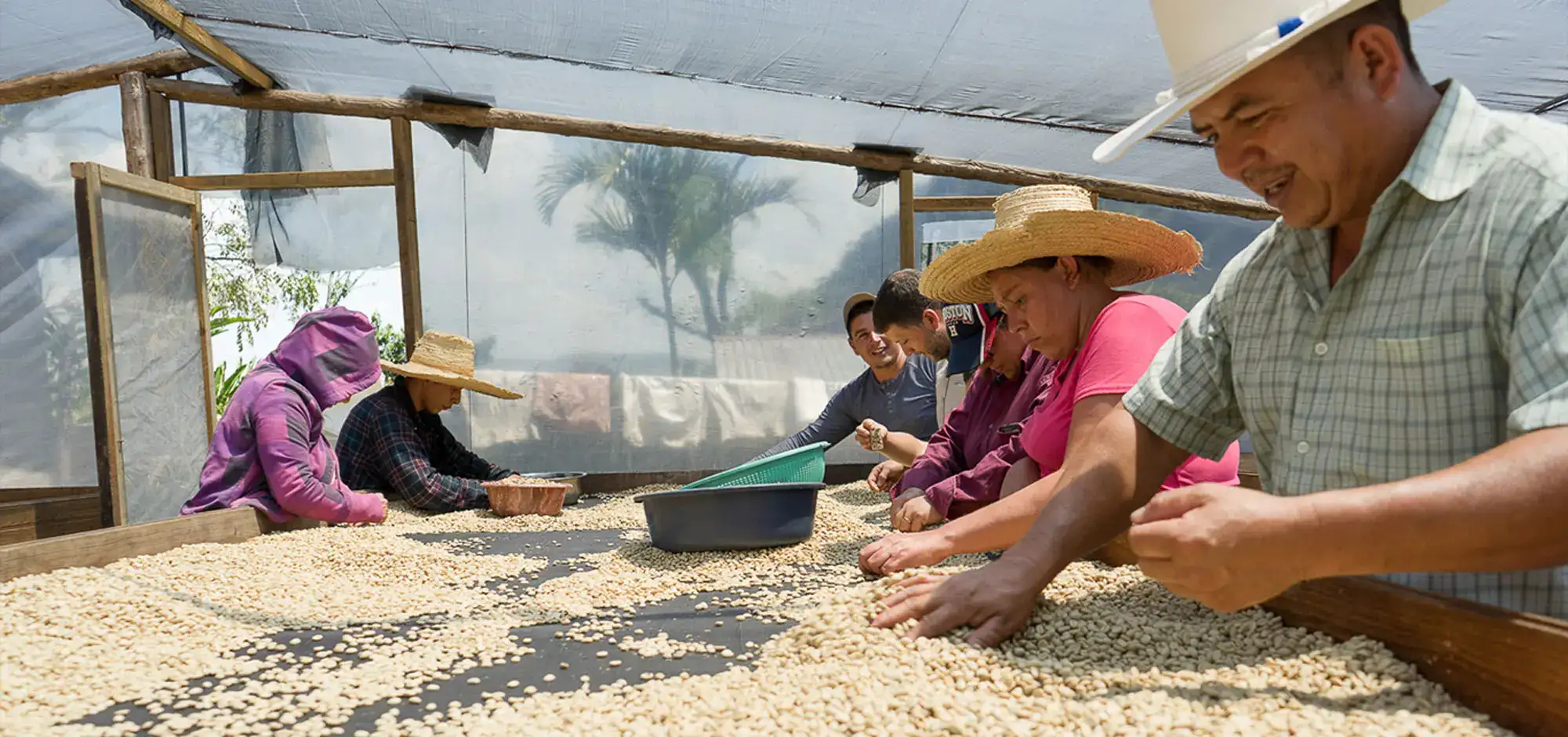Honduras
Nacimiento
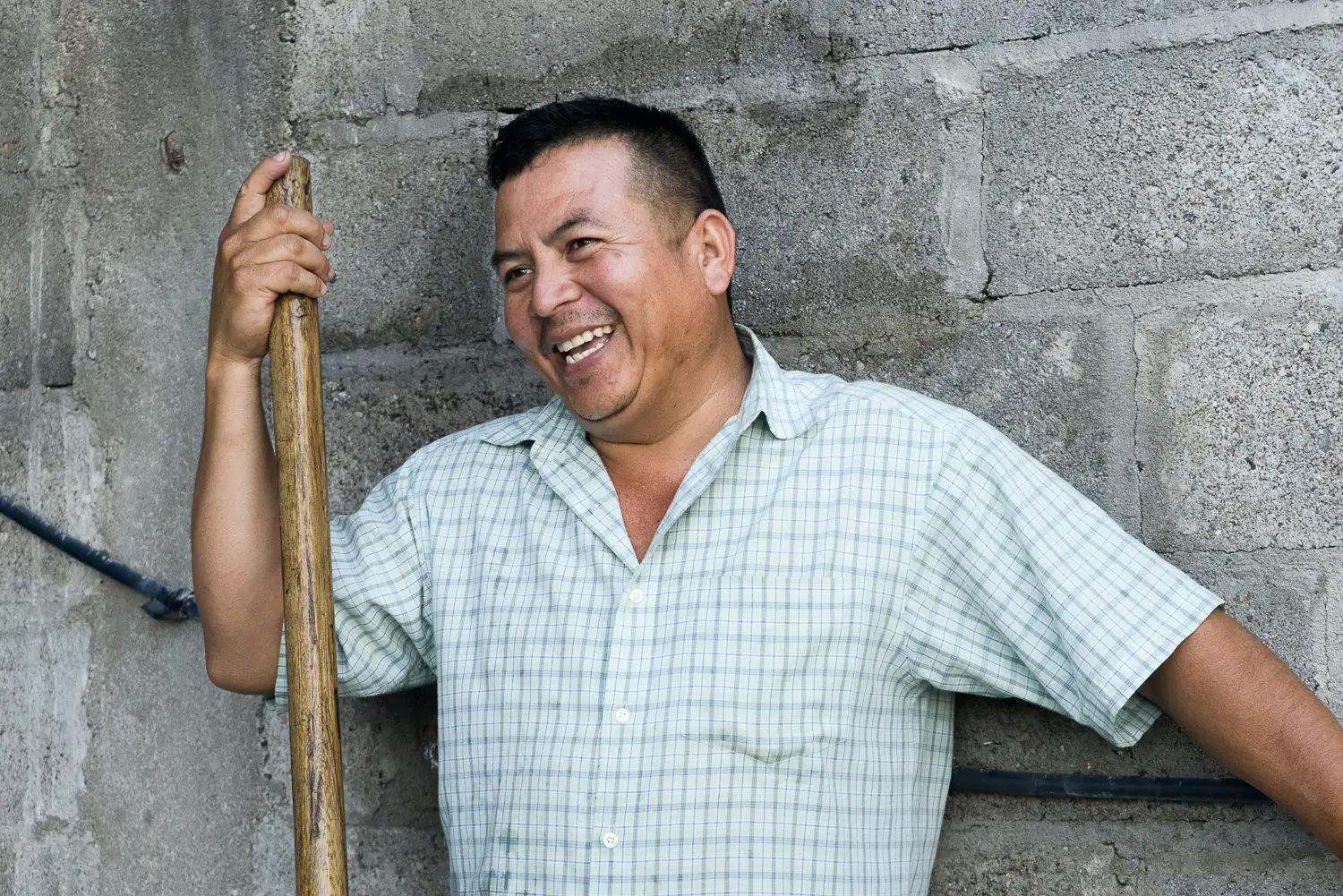

About Nacimiento
Jobneel Caceres Dios owns and runs finca Nacimiento with his wife Fany. They were the first farmers I started working with and buying directly from back in 2009 and since then we have been able to systematically improve their coffees to become one of the best in their area, an area that is by many considered to produce the best coffees in Honduras.
Finca Nacimiento is a small coffee farm situated on the very top of the El Cielito branch in the Santa Barbara Mountain near lake Yojoa in Honduras. The farm is about 20 hectares and is situated on a steep hillside of the mountain. The wet mill is at the bottom of the farm at 1500 masl but the top of the farm is at around 1800 masl. where you have a beautiful view of the lake on a clear day. Because the coffee is planted in different altitudes, this farm is in harvest from January through June.
I find it very interesting that you can taste a distinct difference between the coffees from the early harvest, which are typically picked in the lower altitudes, and the intense and fruity coffees picked in April through June that grow in higher altitudes. It is a perfect example of how a cooler climate leads to longer maturation times for the coffee cherries that produce more intense and characteristic coffees.
A new beginning
Although Jobneel grew up on a farm he did not start producing coffee until his father, Extreberto, convinced him to do so. It all started with Extreberto buying a small piece of land planted with coffee back in 2006. A farm we know as Cielito Lindo that is situated right above Finca Nacimiento. Extreberto had almost no infrastructure on the farm and would de-pulp his coffee on the farm before moving it down the hill with the help of a mule. He took his wet coffee to the local exporter, San Vicente, who would dry the coffee for him and sell it in the market. One day Angel, the quality control manager at San Vicente, had tasted Extreberto’s coffee and saw huge potential in the quality of the coffee.
He immediately encouraged Extreberto to submit his coffee to the Cup of Excellence competition, a competition where samples from farmers are evaluated blindly by an international jury and the best lots are sold on an annual internet auction. To Extreberto’s big surprise he won 2nd place in the competition and sold his coffee for 8,70 USD per lb, which even today is a very good price for coffee.
It was a huge encouragement for Extreberto. He started calling his son, Jobneel who had migrated to the USA in order to work, trying to convince Jobneel to move back to Honduras and start a coffee farm.
While Jobneel was making a living in the US, he was working long and hard days in construction and was struggling to make ends meet. It took a year before Jobneel decided to leave his life in the US and move back to Honduras with his wife and newborn son Johan. He was now ready to work with his father and try to establish a coffee farm on his own. Luckily he managed to buy finca Nacimiento, located right below his fathers farm Cielito Lindo. It was a small farm that was already planted with coffee but without any infrastructure. Jobneel had to build a small wooden house and managed to build a mini-wet mill where he could de-pulp his coffee with a hand-crank de-pulper before driving it to the exporter’s dry mill where the coffee would be dried on patios.
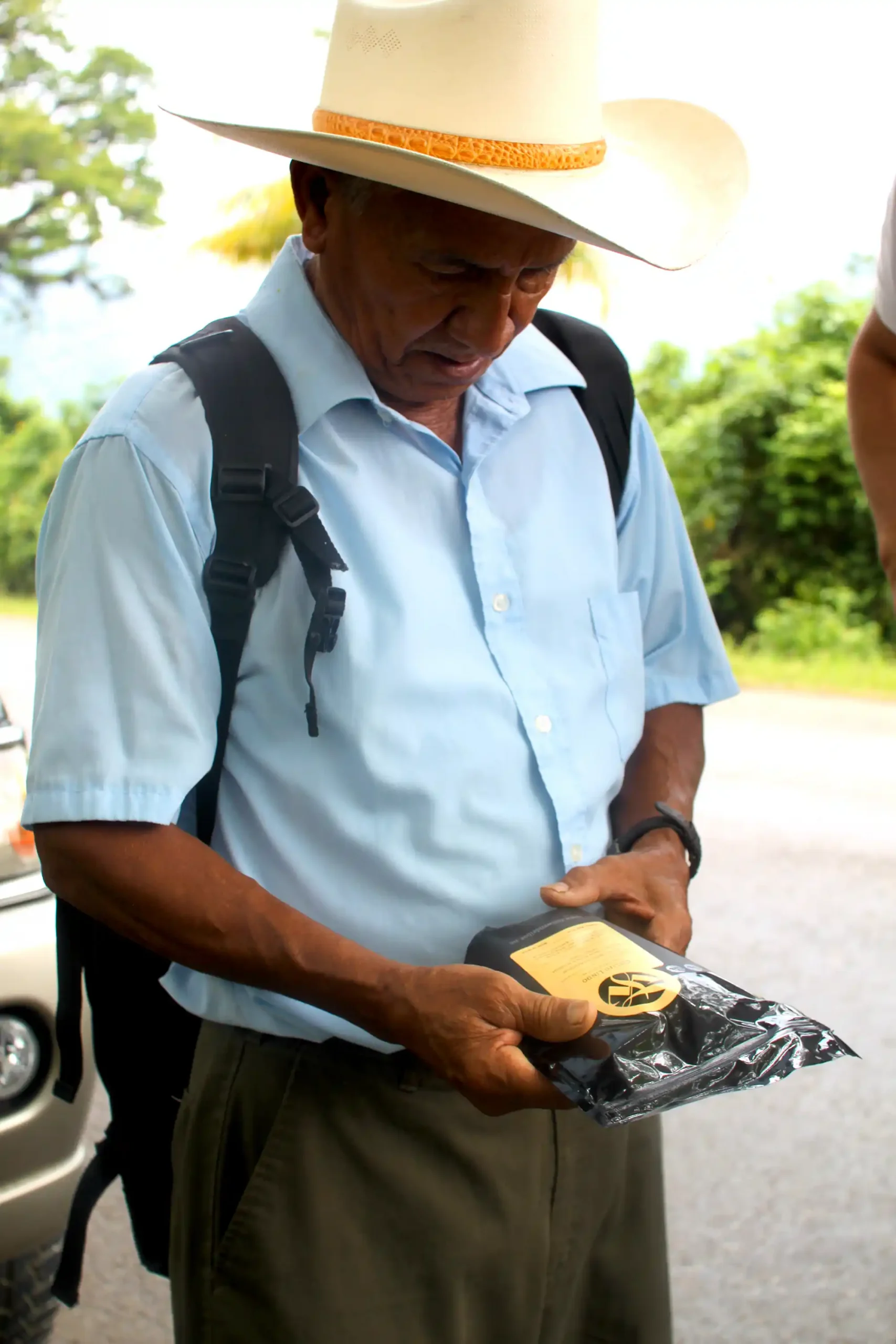
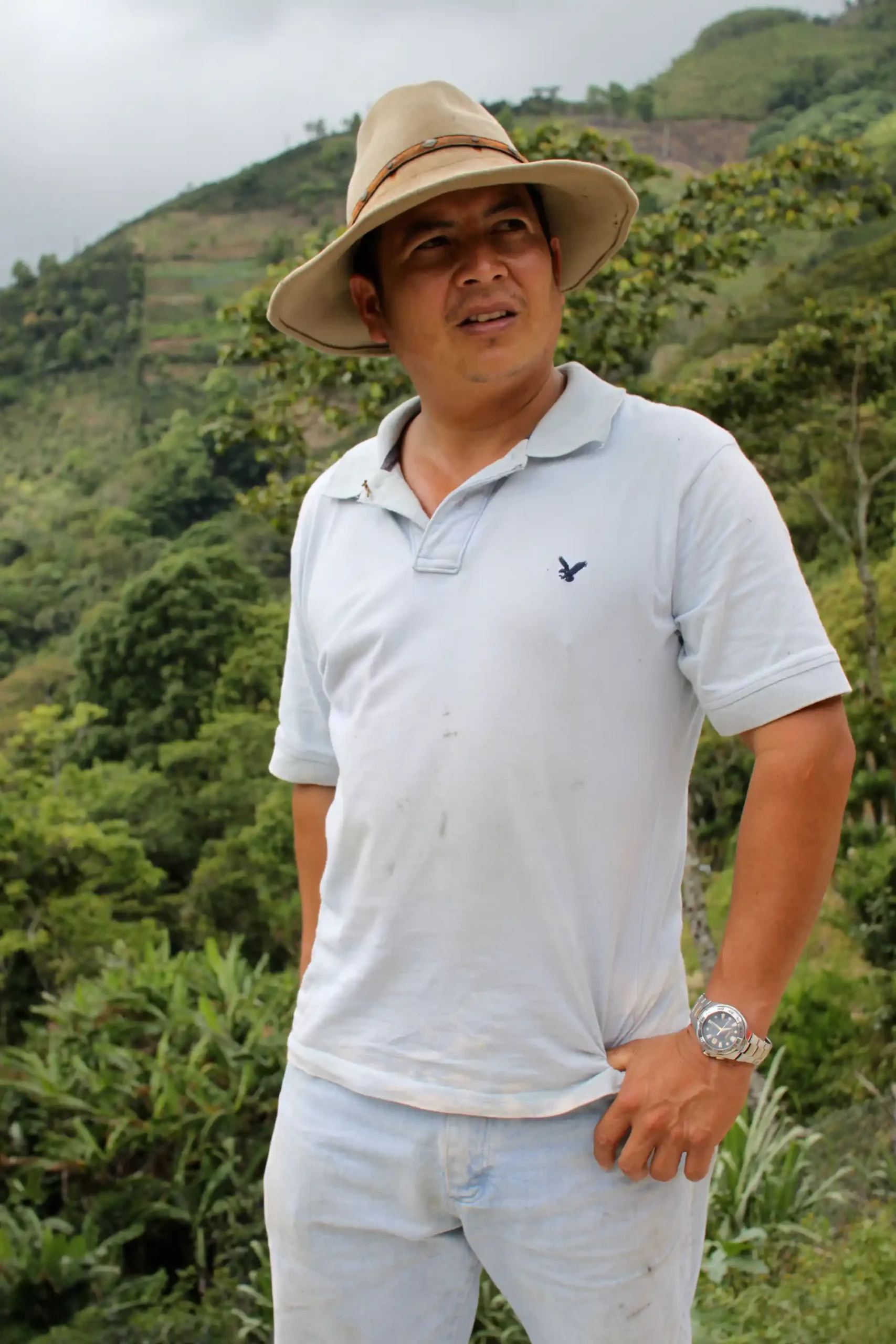
How I met Jobneel
In the following year Extreberto submitted his coffee to the Cup of Excellence once again and won 4th place. At that time I had just started my company and high quality green coffee was not as easy to come by as it is today. I had therefore signed up as a buyer for the 2008 Honduras Cup of Excellence auction in order to see if there were some coffees I would like to buy. My absolute favourite in the auction was the 4th place which was Extrebertos coffee. It had a flavour profile that I simply could not resist. A very fruity and winey coffee. I ended up buying the coffee on the auction for 14 USD per lb. and was very happy with the coffee once it arrived in Norway.
In 2009, I wanted to buy more, but did not know how to contact Extreberto. (Remember this was in the early years of social media and smartphones). Fortunately he had submitted his coffee once again to the Cup of Excellence competition and ended in 5th place. I bought the coffee that year as well and decided that I wanted to go and visit Extreberto during the next harvest. Little did I know that the 2nd place winner in the auction that year was Jobneel and his coffee from finca Nacimiento. I didn’t even know that they were related.
A year later I travelled to Honduras mainly to work as a juror at the 2010 Cup of Excellence, but also with a purpose of visiting Extreberto and his farm Cielito Lindo. It was my first trip to Central-America as a coffee buyer and the goal of the trip was to try to establish a trade relationship directly with Extreberto so that I could buy more of his coffee also outside of the auctions. My local guide and good friend Peter Rodriguez, who worked for a coffee export company took me around different regions showing me different coffee farms and areas.
On one of the first days we went to visit Extreberto and after a long drive up the mountain we managed to find the entrance of the farm. Although we had agreed to meet Extreberto on the farm, he was nowhere to be found. Instead we were met by Jobneel who welcomed us and was ready to show us his farm Nacimiento. I remember being slightly annoyed that I did not get to meet Extreberto and see his farm Cielito Lindo, but after a bit of translation I realised that Jobneel was Extreberto’s son and they worked together. In fact Jobneel had been helping Extreberto with picking and processing his coffees in the past years.
After walking (or should I say climbing) up the hill to the top of Nacimiento, Jobneel pointed at a small piece of land at the very top of the mountain and said “this is Cielito Lindo, my fathers farm” I realized that Cielito Lindo was just a small piece of land right on top of Nacimiento and almost the entire production was sold in the Cup of Excellence auction. Jobneel tried to explain to me that if I wanted to buy more coffee it would have to be from his farm Nacimiento as there were just small quantities of coffee being produced at Cielito Lindo. In the afternoon after walking around the farm and talking for hours (yes, Jobneel loves to talk) we agreed that Jobneel would send me samples of his coffee and I promised him a good price for it if the quality was good.
We managed to buy 1300 kg of coffee from Nacimiento that year in addition to Extrebertos auction coffee. It was not a lot of coffee but it was the start of a great relationship with one goal in mind: to work systematically together in order to make the coffee more consistent and add value to the coffee by raising the quality.

A Tour of Nacimiento with Tim Wendelboe
Please note, you need to accept functional cookies to be able to play the video.
Years of gradual improvements
Over the years I have been able to visit the farm many times and sometimes several times during a harvest. On each visit I have observed how Jobneel has been harvesting, processing and drying his coffees. Every time I visit we will typically discuss the status quo and normally we will come up with new ideas and changes he can make in order to improve the quality of his coffees.
Despite Jobneel being a bit reluctant to change the way he did things in the early years, he really stepped his game up in the later years and has become a role model when it comes to producing high quality coffee in his community. But the changes did not happen overnight. Although I could probably write a small book about all the work we have done with Jobneel over the years there are still a few things that stand out and that have dramatically changed the quality of his coffees.

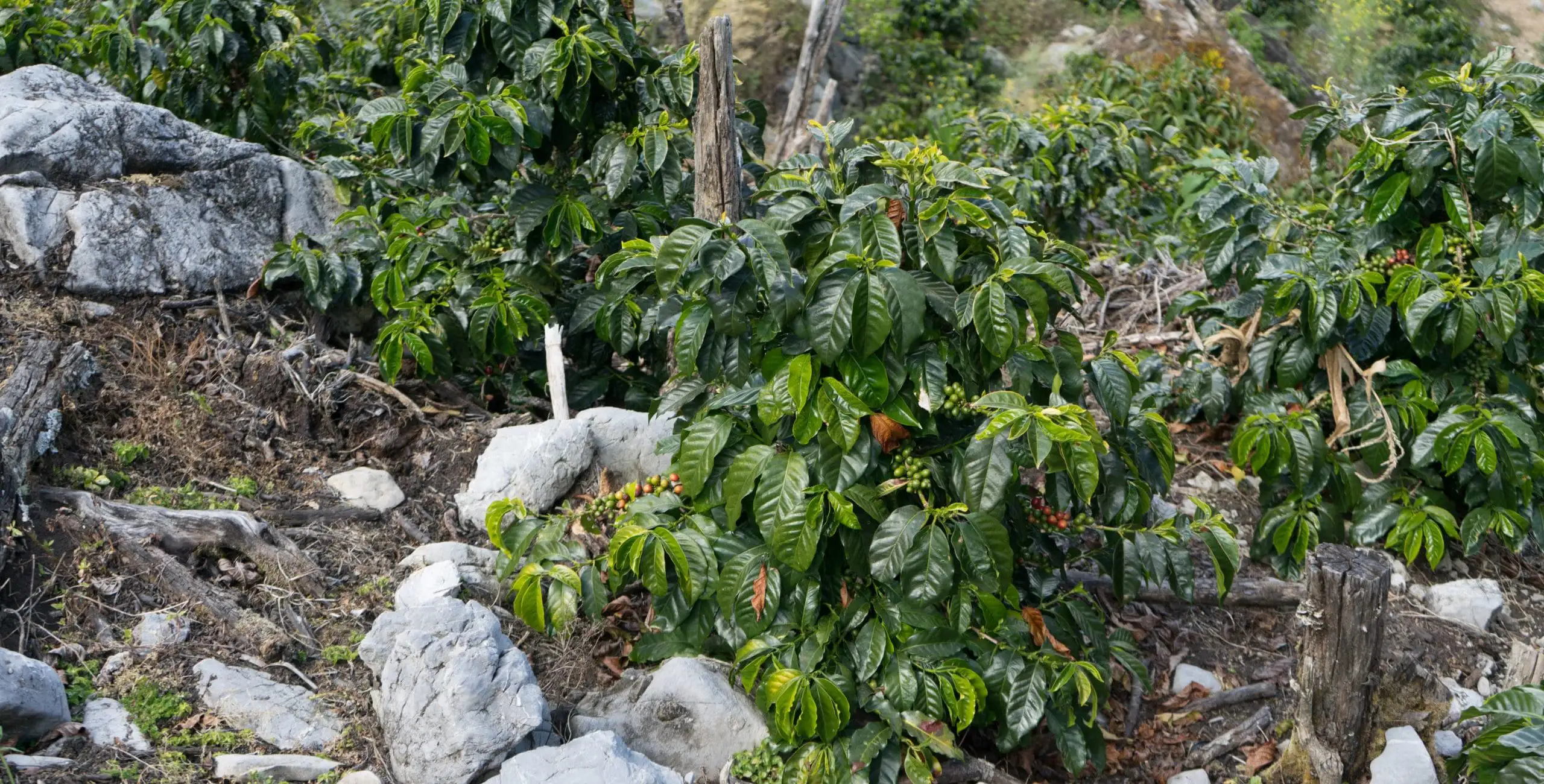
Lot separation
One of the first and most important changes we made with Jobneel was to have him stop bulking all the different batches of coffees he picked into one lot and instead separate each individual picking based on harvest date and cultivar. Jobneel used to have Catuaí, Pacas, Bourbon and Ihcafe90 cultivars planted on his farm and he would mix them all together and sell them as one blend. Knowing that some cultivars taste better than others, I asked him to separate the different cultivars so that we could taste them individually and remove the ones with lower quality in the cup and plant more of the ones that tasted great. mowing weeds on a regular basis which means the soil will gradually become better because of the accumulation of organic material being broken down to hummus again. We have also encouraged and supported him in planting more shade trees in order to prepare for a hotter climate as we believe that the best coffees are always grown under natural shade from native trees.
The results were clear from the first trials and Jobneel ended up removing his Catuaí trees, replacing them with the fruity tasting Pacas and Bourbon cultivars.
An additional benefit of separating the coffees by harvest dates is the extension of the coffees shelf life. We can now buy and sell the coffees harvested in January and February before we sell the coffees harvested in May and June and therefore the later harvested batches are not affected by the earlier pickings. We have also discovered that the later harvests always taste better than the coffees picked early in the year. This is most likely due to the slower maturation of the coffee cherries at higher altitudes that get picked towards the end of the harvest.
Drying and storage
The biggest hurdle has been to persuade Jobneel to start drying his own coffees. Before he was not able to do it himself because he was living on his farm where the climate does not allow for efficient drying due to the cloudy weather. Because of this he would drive his wet parchment coffee down to a lower altitude to the sunny town Peña Blanca where his exporter would dry his coffees on cement patios. It is no big secret that I personally don’t like to buy coffees dried on patios, mainly because I find the method to often reduce the shelf life of the coffee and there is also a risk of making the coffee taste less clean and more inconsistent. I was therefore trying to persuade Jobneel to start drying the coffee himself.
After many visits and some gentle pressure I decided to help financially in order to build one drying bed so that we could at least test if there was any difference between the two drying methods. Jobneel stepped up to the challenge and constructed several raised beds. The results were outstanding. Not only was he able to dry the coffee more evenly and more gently under shade, but he started hand sorting the coffees, removing all the visual defects from the coffee while it was drying. In combination with improved storage conditions it made a huge and immediate positive influence on the quality. The slower, more gentle drying times produced coffees that tasted sweet and fresh for a longer time and also resulted in a lot cleaner and more transparent tasting coffees.

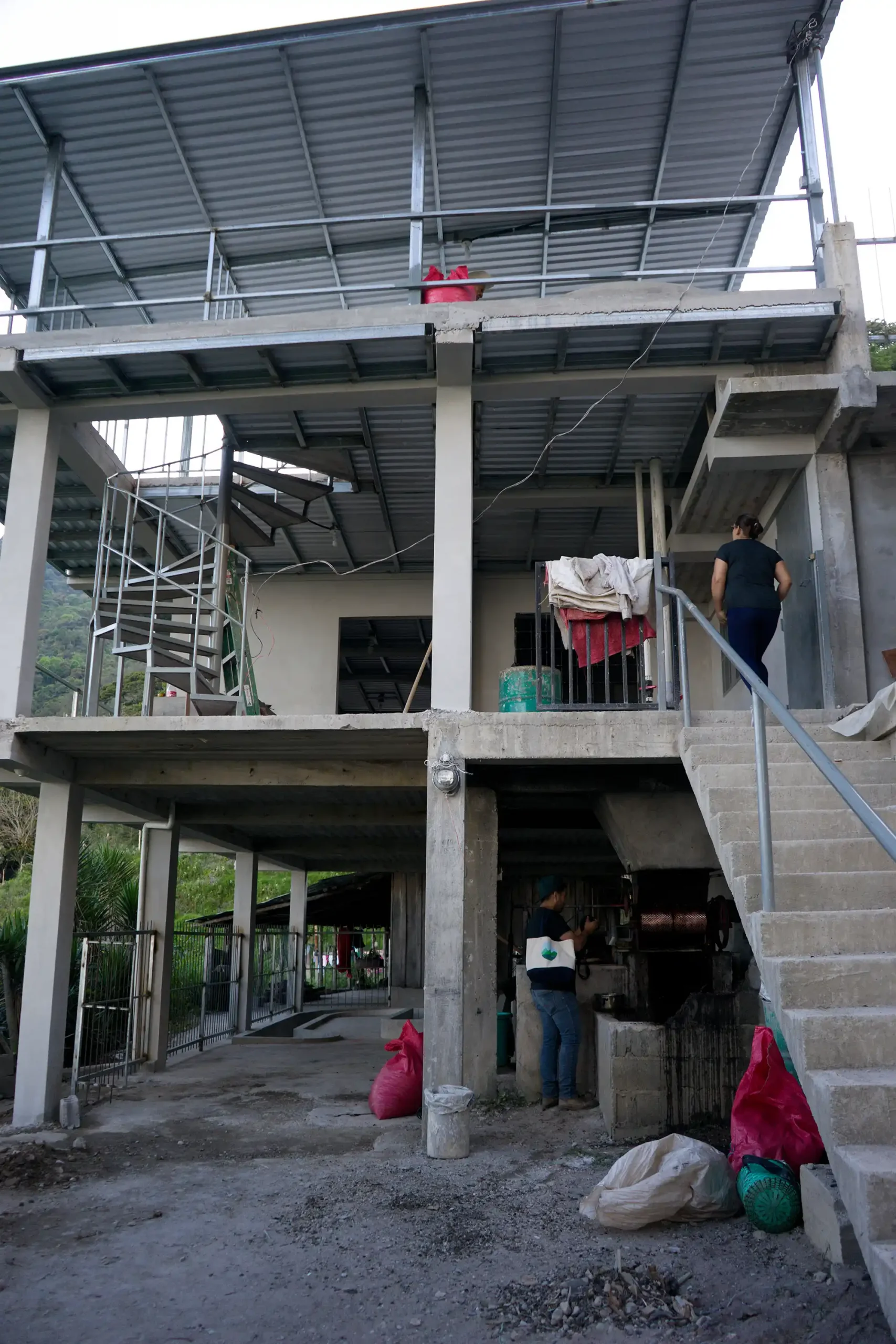
A bright future
If you visit finca Nacimiento today, you will see a brand new wet mill in front of the old wooden farm house. Jobneel is now able to process more coffee and in a better way than before and the modernised wet mill has for sure made the coffee more consistent.
But the wet mill is not the only obvious change on the farm. There is now a small apartment on top of the mill built for the farm manager so that he can stay close to the farm up in the mountain throughout the year. Jobneel also built and moved into a new house in the small village on the foothills of the mountain where he lives with his family and where he dries all his coffees in his backyard next to his garden.
He even installed an old school roaster at his house and started roasting coffee to sell in the local market. But what I am most excited about at the moment is the new land that Jobneel recently purchased where he has planted high quality coffee cultivars such as Geisha, Pacamara and SL28. It is situated in a different area than his original farm Nacimiento but still with good altitude and micro climate.
I can’t wait to be able to taste the coffees he will be producing there and share them with you. I believe Jobneel, his family and their farms have a very bright future ahead.
Picking & Sorting
The coffee is selectively hand picked by hired pickers under supervision of Jobneel. Cherries are hand sorted and floated in clean water before they are processed.

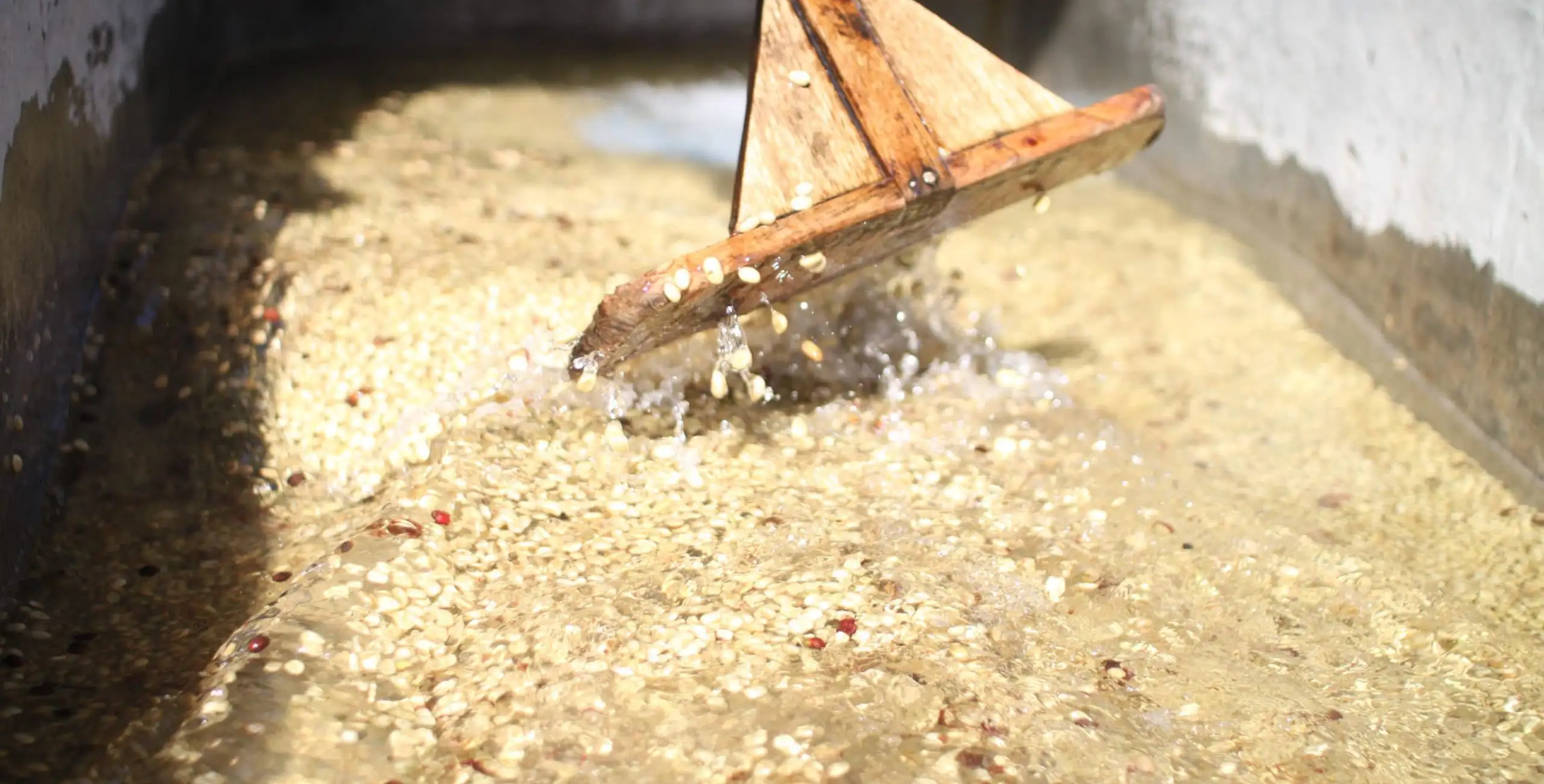
Depulping, Fermenting & Washing
After de-pulping, the parchment coffee is dry-fermented for about 12-14 hours. Then the parchment is rinsed with clean water before it is dry fermented for another 12 – 24 hours, depending on the ambient temperature. After fermentation, the coffee is washed in a channel where again the floaters are removed.
Drying
The coffee is bagged and transported to Jobneel’s house where the coffee is dried on raised beds covered with shade for 14 – 20 days. During drying, Jobneel and his family remove all the defect parchment coffee from the good coffee. When the coffee is finished drying he packs the coffee in airtight grain pro bags for storage before the coffee gets milled, packed in vacuum packed bags and exported.
